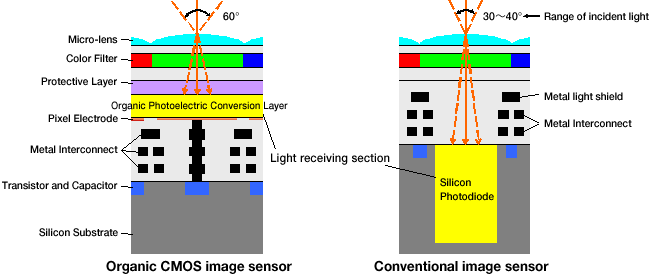Fuifilm and Panasonic Working on New Organic CMOS Sensor
How does 14 stops of dynamic range sound to you?

Fujifilm and Panasonic have teamed up to work on a new sort of CMOS sensor that could make things mighty interesting. The two companies have officially announced they are working on a “organic CMOS image sensor technology using organic photoelectric conversion layer”, which could dramatically improve dynamic range, boost sensitivity, and reduce image noise.
The new sensor is a combination of technology from both companies, brought together for dramatic boosts in performance. It’s Panasonic’s semiconductor device technology, and Fujifilm’s organic photoelectric conversion layer.
Panasonic’s contribution is new semiconducter technology and noise reduction circuitry, which serve to dramatically boost dynamic range and lower image noise. Panasonic claims dynamic range of 88dB, which, as SLRLounge points out, is the equivalent of 14.6 stops. That’s more than very high-end cameras like medium format digital backs.
The advantage of the organic photoelectric conversion layer is twofold. It sits above the metal circuitry and transistors, which means that it can cover the entire area of the sensor without requiring a light-shielding film around the edges. This means it can take advantage of more light, which Fujifilm claims “boosts sensor sensitivity by 1.2 times”. And since the film is much thinner than previous technology, it can sit closer to the top of the lens, allowing for a wider degree of incident light. This is said to allow for high color fidelity, and potentially allow for smaller lenses.

This is extremely exciting technology, but there’s still a lot we don’t know. There are still questions of speed and sharpness, and if once these sensors get loaded into commercial cameras, the difference will be that apparent. Remember when Fujifilm’s EXR CMOS was meant to be a revolution in image quality?
[via SLRLounge]